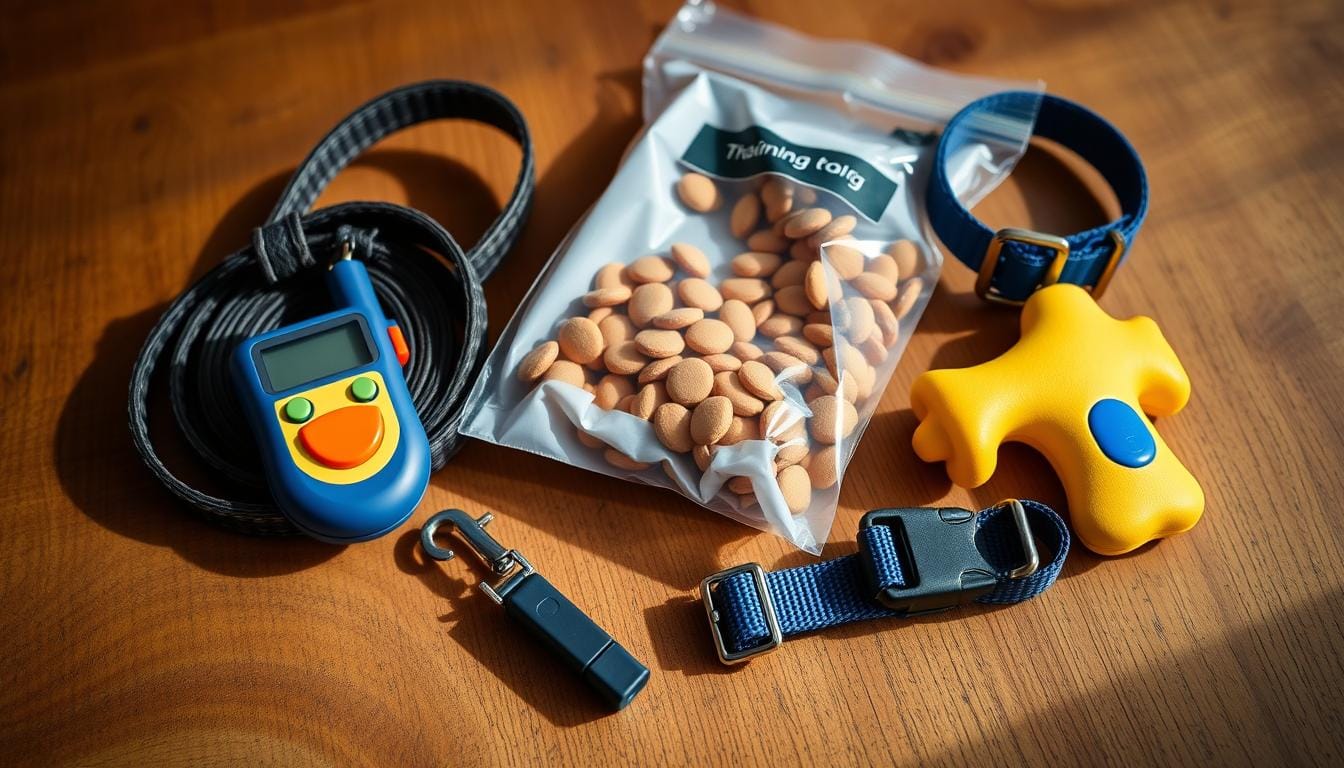
Training a disobedient dog needs patience, consistency, and the right tools. Experts say consistent training and positive rewards are key1. With the right tools, you can make your dog’s behavior better and strengthen your bond.
Teaching commands like “sit” or “down” helps build a training system1. Start training indoors to keep your dog focused, as outside distractions can make it hard to concentrate1.
Key Takeaways
- Consistent obedience training is crucial for training a disobedient dog.
- Positive reinforcement techniques are essential for effective dog training.
- The right tools to train disobedient dog can improve your dog’s behavior.
- Establishing commands like “sit” or “down” can create a foundation for further training.
- Training duration can vary significantly, with some dogs requiring several months to a year or longer for successful behavior modification1.
Understanding Why Dogs Don’t Listen
It can be really frustrating when your dog doesn’t listen. To solve this, you need to know why they’re not listening. One big reason is if you’re not calm when you talk to them. Dogs prefer calm owners over loud ones2. Also, too much noise can make them ignore you2.
Using the right obedience training equipment and behavior correction devices can help. But, you must find out why they’re not listening. This could be because they’re not trained well, or because they’ve had bad experiences before. Knowing this helps you make a better training plan for them.
Some signs your dog might be stubborn include:
- Refusing to follow commands
- Ignoring instructions
- Exhibiting aggressive behavior
It’s also key to think about how past training has affected them. Positive reinforcement and the right obedience training equipment can help. This way, your dog can get rid of bad habits and bond better with you.
Every dog is different, so what works for one might not work for another. By understanding your dog’s needs and personality, you can create a training plan just for them. This will help them become a well-behaved and loyal friend.
Essential Tools to Train Disobedient Dogs
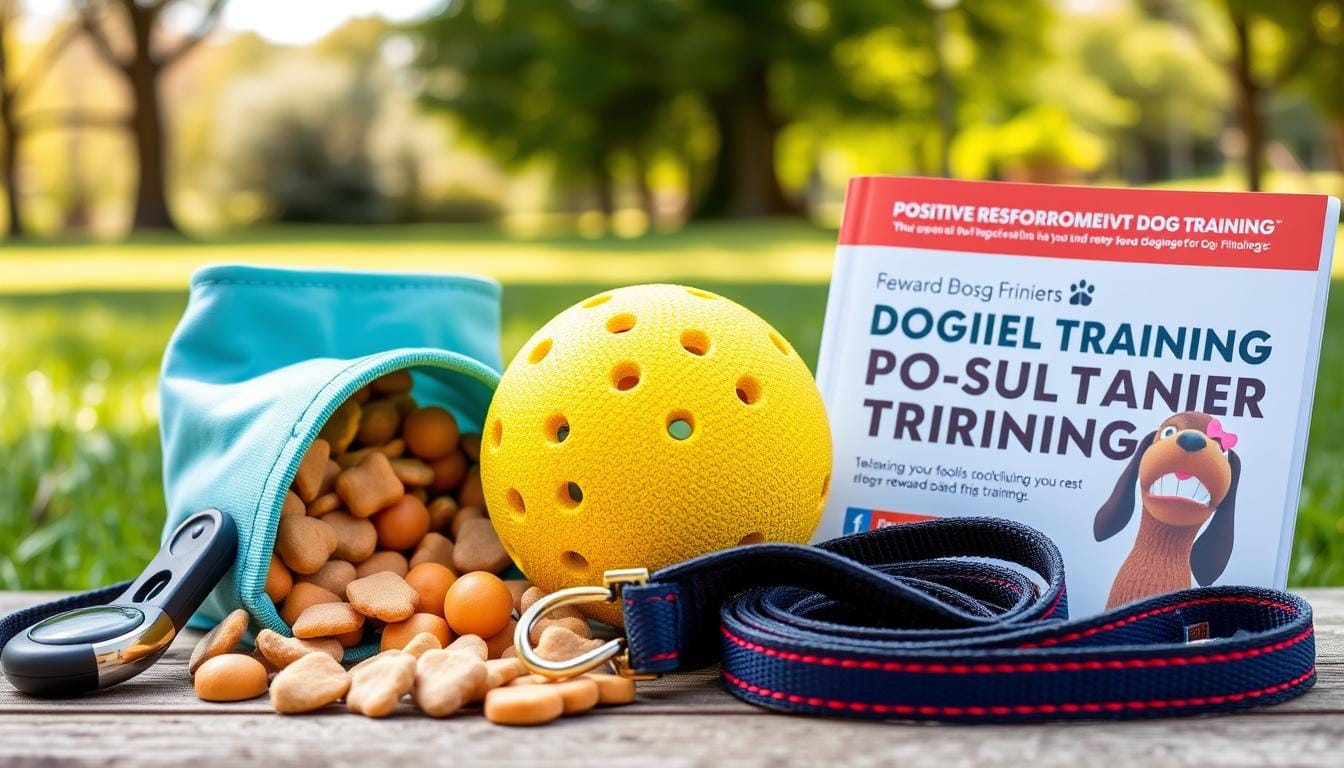
Training disobedient dogs needs the right tools. Positive reinforcement tools like treats and praise encourage good behavior. Training aids, such as leashes and collars, help set boundaries and reinforce commands. Research shows that being consistent with commands, rewards, and corrections is key to success3. Tools like two-dog shock collars help with this by allowing for adjustments and corrections3.
A good training plan mixes positive reinforcement tools with aids for unruly dogs. Marker training, found to be the most effective over 50+ years, is a key part of this4. Using these tools and techniques can improve obedience and strengthen the bond between dog and owner. Studies also show that dogs with consistent mental stimulation have 30% less unruly behavior than those without5.
Some key tools for training disobedient dogs include:
- Leashes and collars
- Positive reinforcement tools, such as treats and praise
- Marker training equipment
- Training aids for unruly dogs, like head halters and basket muzzles
These tools help dog owners communicate clearly, set boundaries, and reinforce good behavior. By using these tools and techniques, dog owners can improve obedience and strengthen their bond.
| Tool | Description |
|---|---|
| Leashes and collars | Help establish boundaries and reinforce commands |
| Positive reinforcement tools | Encourage good behavior with treats and praise |
| Marker training equipment | Help with effective training and communication |
Choosing the Right Training Collar
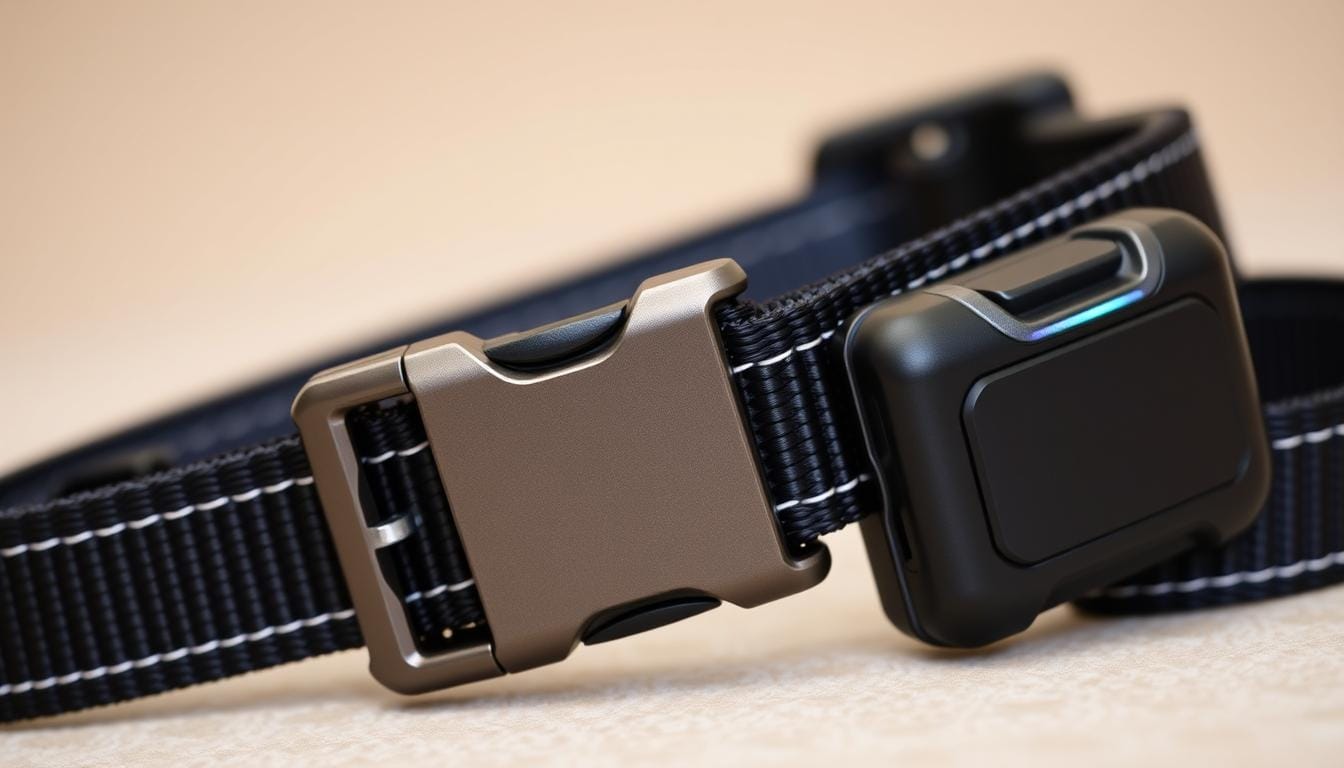
Choosing the right training collar is key for dog training. There are many types of collars, making it hard to pick the best one. Correction collars help with bad behavior, while treats reward good actions.
According to6, there are flat collars, martingale collars, and prong collars. Each has its own good and bad points. It’s important to pick the right collar for your dog’s size, breed, and behavior.
Flat Collars vs. Martingale Collars
Flat collars are common and good for daily use. Martingale collars are for dogs that pull hard. They tighten a bit when the dog pulls, but don’t choke6.
Some people use correction collars to train dogs. But, it’s important to use them right to avoid hurting your dog. Using treats with correction collars can help a lot, as treats are a positive reward7.
The best collar for your dog depends on their needs and behavior. By picking the right collar and using treats, you can help your dog be well-behaved and obedient6.
| Collar Type | Description |
|---|---|
| Flat Collar | Suitable for everyday use |
| Martingale Collar | Designed for dogs that pull on the leash |
| Prong Collar | Applies pressure to the dog’s neck when pulling |
Positive Reinforcement Training Tools
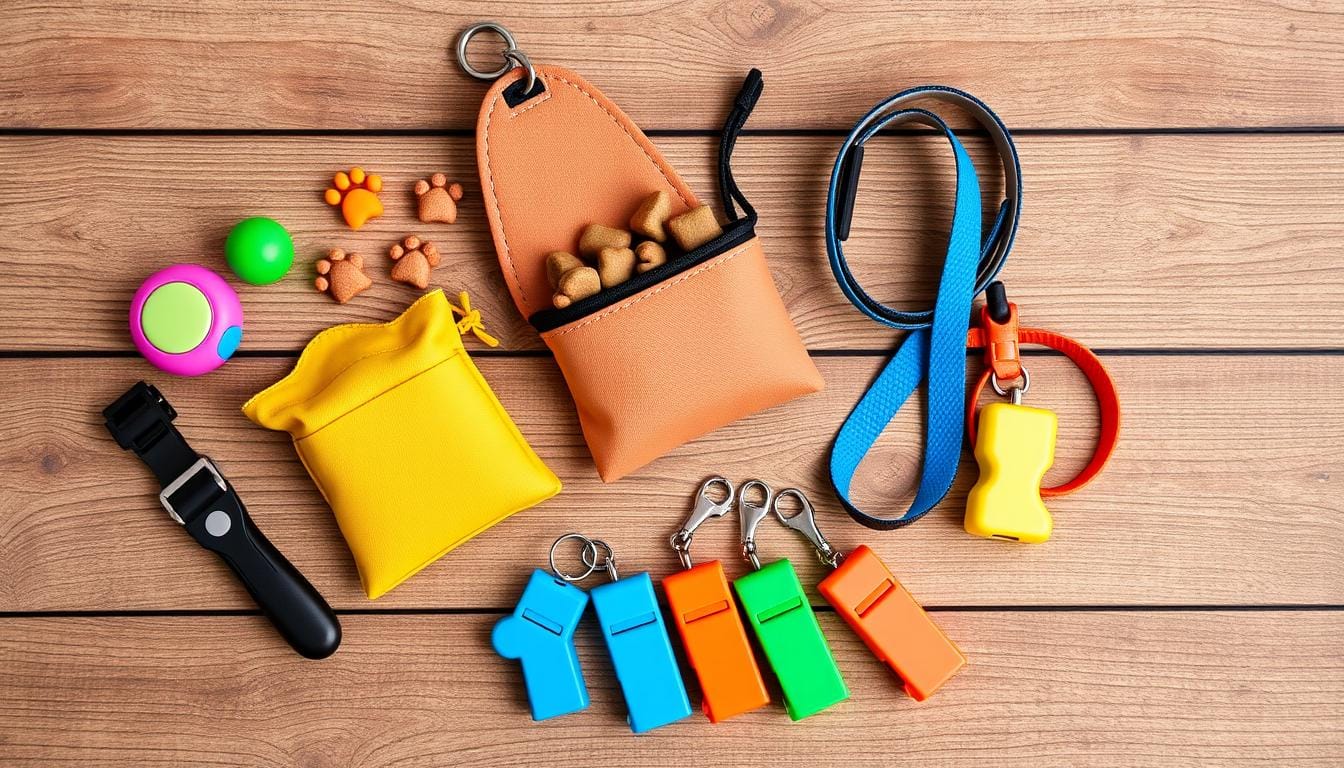
Training your dog with positive reinforcement is a great way to go. It rewards good behavior instead of punishing bad ones. Tools like clickers and treats are key to this method, helping your dog learn and grow8.
Dog training tools, like leashes and harnesses, work well with positive reinforcement. They help your dog learn good habits and strengthen your bond9. Positive reinforcement training boosts obedience, confidence, and your bond with your dog.
Some examples of positive reinforcement training tools include:
- Treats and praise to reward good behavior
- Clickers to mark desired behaviors
- Leashes and harnesses to guide your dog during walks
These tools can be used in many ways to fit your dog’s needs and personality10.
Using behavioral training accessories and dog training tools in your positive reinforcement program makes your dog a well-behaved and loyal friend. Always use these tools positively and consistently for the best results8.
Effective Use of Training Leashes
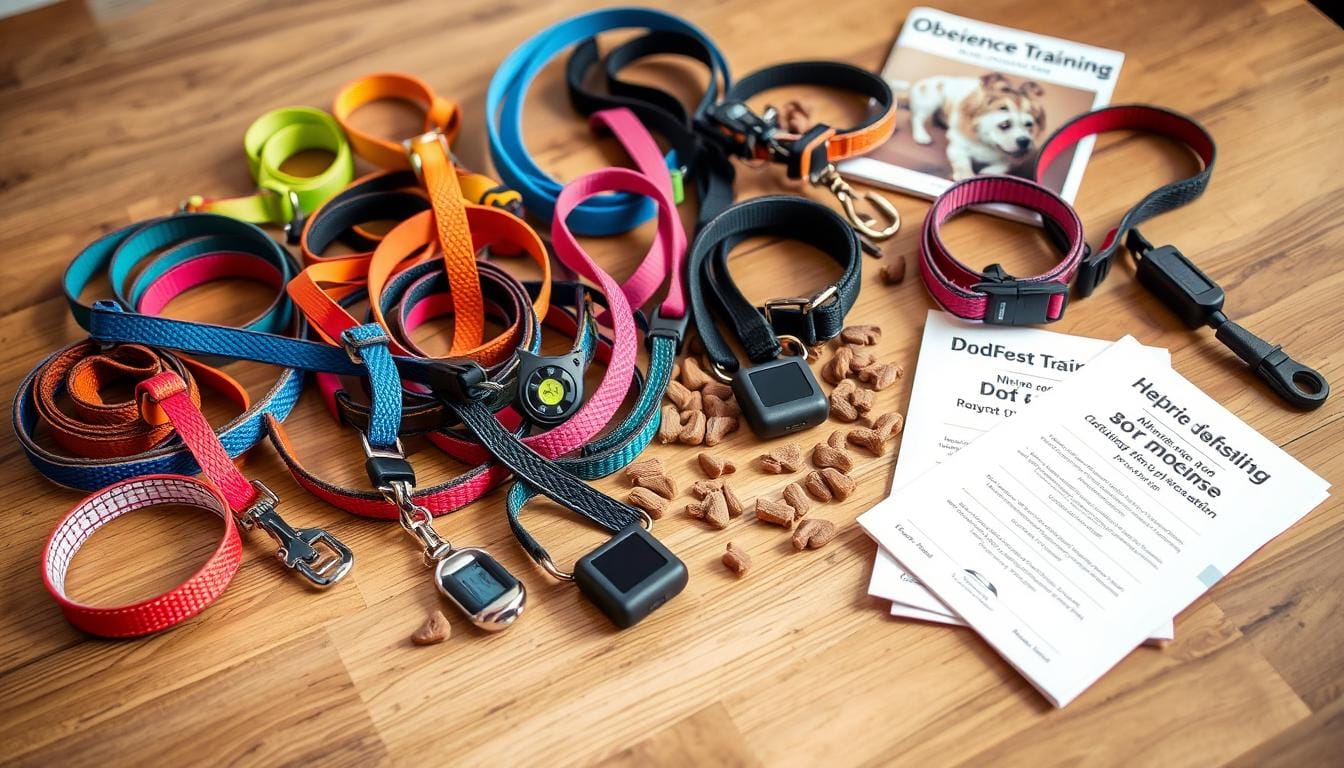
Training leashes are key for clear communication and setting boundaries with your dog11. To use them well, you need to know the different techniques. This includes holding the leash right, using verbal cues, and rewarding good behavior.
Long-line training gives your dog more freedom while keeping control11. It’s great for unruly dogs, teaching them self-control and responding to commands from a distance. Retractable leashes have their pros and cons, so think about these when picking a leash12.
Standard Leash Training Techniques
These methods help you bond with your dog and ensure they follow commands. Using training leashes helps your dog become well-behaved and loyal11.
Long-Line Training Methods
Long-line training is good for dogs that pull on the leash11. It lets your dog have more freedom. This helps them learn to follow commands and behave well, even when they’re not right next to you.
Clicker Training Equipment and Techniques
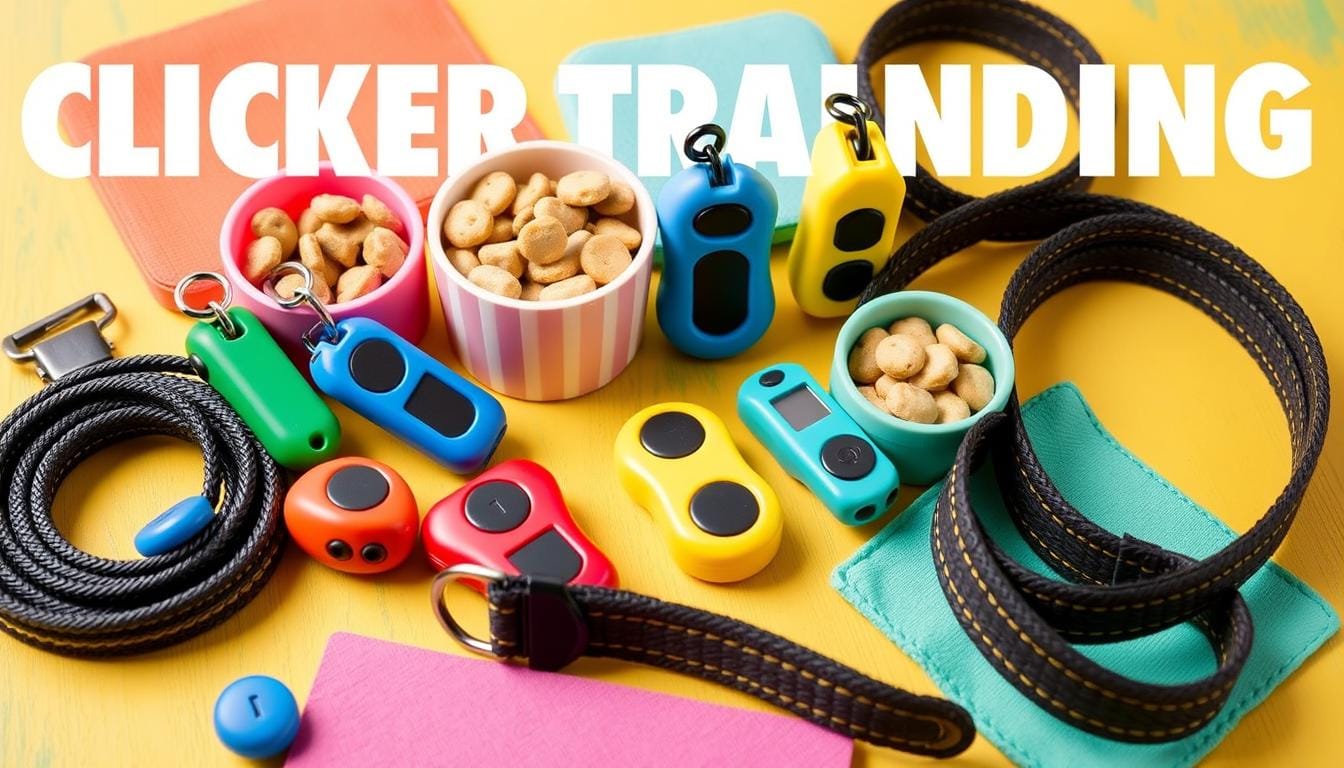
Clicker training is a popular way to train dogs. It uses positive tools like clickers and treats to teach good behavior. This method works well for dogs of all ages and breeds13. With the right tools and techniques, you can improve your dog’s obedience and bond with them.
Clicker training helps you communicate clearly with your dog. It uses a specific sound, like a clicker, to mark good behavior. This helps your dog understand what you want and rewards them with treats13. It’s effective for dogs as young as 8 weeks and even older, aggressive dogs14.
Here are the essential tools for clicker training:
- A handheld clicker or alternative clicking method
- Treats, such as training treats for disobedient dogs
- A clear and consistent training schedule
Using these tools and techniques creates a positive training environment. It helps your dog become well-behaved and loyal.
Experts say you can start clicker training with dogs as young as 8 weeks. It leads to quick learning of commands and behaviors13. With consistent training and positive reinforcement, you can help your dog develop good behavior. This strengthens your bond with them, using positive tools and treats.
| Age | Training Method | Results |
|---|---|---|
| 8 weeks | Clicker Training | Rapid understanding of commands and behaviors |
| 6 months | Consistent Clicker Training | Proficiency equivalent to older pets |
By following these tips and using the right equipment and techniques, you can create a positive training environment. This helps your dog become well-behaved and loyal, using positive tools and treats1413.
Treat Pouches and Reward Systems
Dog training benefits from treat pouches and reward systems. These tools help reinforce good behavior. Treat pouches store and dispense treats during training15. shows marker training’s rise in America since the early 1990s16. advises scattering 5-10 high-value treats to lower arousal.
Keeping treats fresh is key. Store them in airtight containers or ziplock bags. Rewards should be immediate and consistent15. notes that mastering marker training leads to success16. suggests starting with the dog 6 feet away from guests.
Selecting the Right Training Treats
Choosing the right treats is vital. They should be healthy, tasty, and easy to eat. Use dog training tools like treat pouches to dispense them. High-value treats include real meats, cheese, or freeze-dried liver, focusing on what the dog loves most16.
Proper Treat Storage Methods
Storing treats properly keeps them fresh and potent. Use airtight containers or ziplock bags.
Timing of Rewards
Timing rewards correctly is crucial. They should be immediate and consistent15. suggests starting with rapid treat delivery, then slowing down as the dog relaxes. This shows the need to adjust based on the dog’s behavior16.
Modern Electronic Training Aids
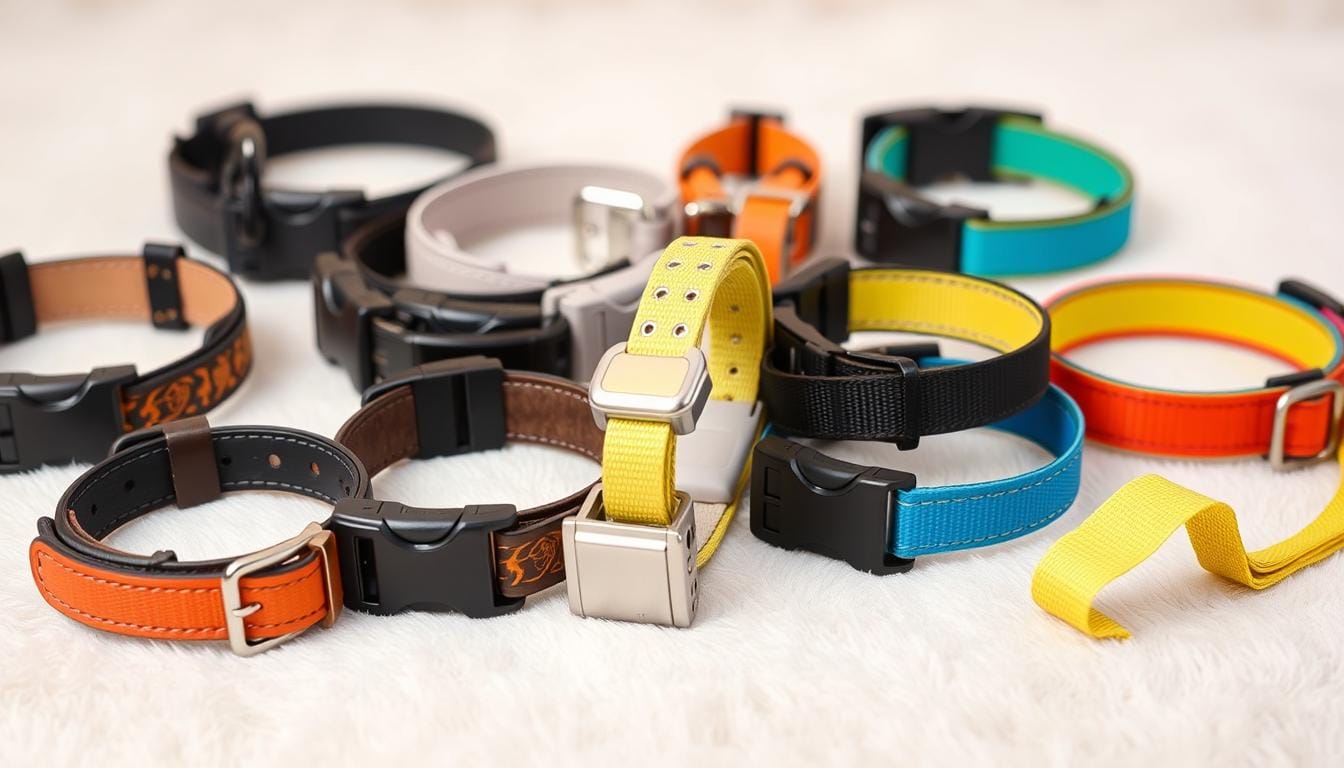
Exploring dog training reveals many tools for clear communication and setting boundaries. Correction collars and training aids are key for obedience. With the right tools and methods, you can improve your dog’s behavior and bond with them17.
Modern tools like e-collars and remote devices use tech to encourage good behavior. They have adjustable levels, vibration, and tone to stop bad behavior without hurting18. Brands like SportDOG and Petrainer offer quality collars with various correction types19.
When picking a correction collar, think about these things:
- Adjustable levels for different needs
- Vibration and tone to stop bad behavior without pain
- Waterproof for all weather
- Rechargeable battery for long life
These features help you find the best training aid for your dog, leading to a successful training17.
Using modern electronic training aids can improve your dog’s obedience and your bond. Always follow the maker’s instructions and get help from a professional trainer if needed18.
| Brand | Model | Features |
|---|---|---|
| SportDOG | SportHunter 825X | Up to ½ mile range, 21 levels of stimulation |
| Petrainer | Petrainer PET998DRB | Up to 330 yards range, 100 levels of pulse intensity |
With the right tools and positive reinforcement, your dog can become well-behaved and loyal19.
Interactive Training Toys and Tools
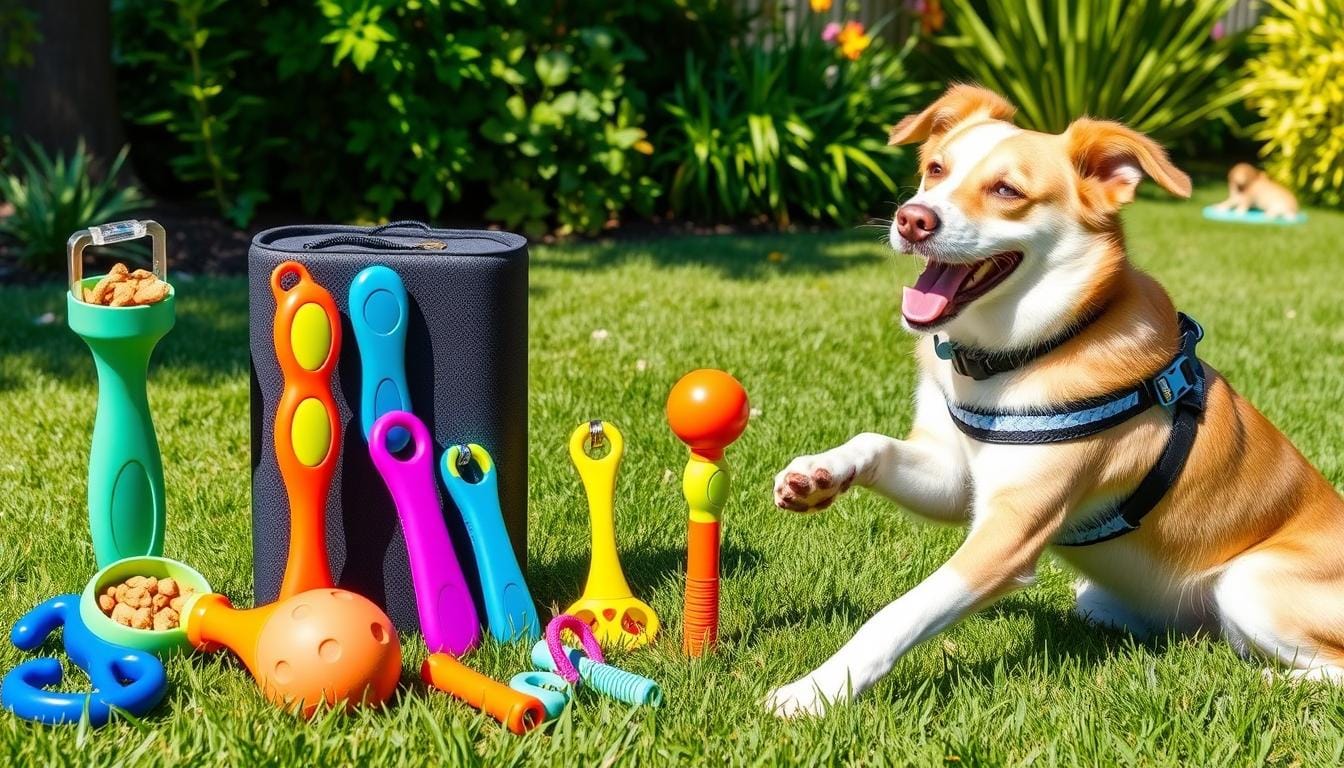
As a dog owner, you want the best for your pet. Interactive training toys and tools are great for this. They help your dog’s mind and body grow strong. With the right tools, your dog will be well-behaved and loyal.
Interactive toys like puzzle toys and agility equipment are key. They challenge your dog and improve their skills20. These toys keep your dog’s mind sharp and prevent bad behaviors21. They also help you bond with your dog.
Choose toys that fit your dog’s needs and personality. For example, tough toys are good for heavy chewers22. Treat-dispensing toys slow down eating and keep your dog’s mind busy21. The right toys make learning fun for your dog.
Interactive toys and tools make your dog happy and well-adjusted. They give your dog the mental and physical stimulation they need202122. This strengthens your bond with your pet.
Creating a Training Tool Kit
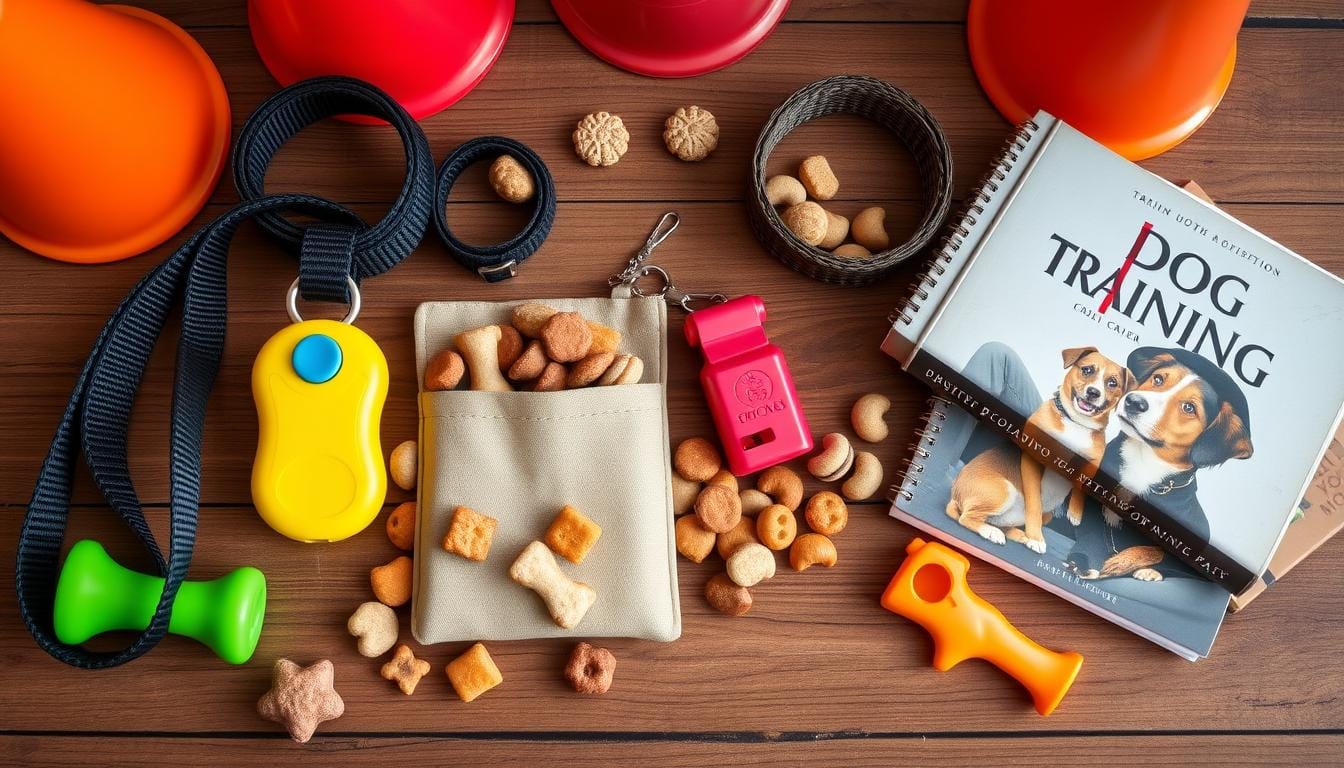
As a dog owner, having the right tools is key for training. Your kit should have training collars, leashes, and positive tools. Many dog issues come from them acting like the pack leader23. So, picking the right tools and methods is crucial.
A good kit should have clickers, treats, and puzzle toys. These help with training and keep your dog’s mind active. Key items include:
- Training collars and leashes
- Positive tools like clickers and treats
- Puzzle toys and games
- High-value rewards
Choosing the right tools depends on your dog’s needs and personality. A good plan meets your dog’s unique needs. Trainers say marker training is now common in America, leading to more engaged dogs24.
Investing in the right tools helps you meet your dog’s needs. Always use positive methods and avoid harsh tools. This keeps your dog happy and your bond strong23.
| Training Tool | Description | Benefits |
|---|---|---|
| Clicker | A small device that makes a distinct sound when pressed | Helps with positive reinforcement training and marker training |
| Treats | High-value rewards used to motivate and reinforce desired behavior | Encourages positive behavior and helps with training |
| Puzzle Toys | Interactive games that challenge your dog and provide mental stimulation | Reduces boredom and stress, and helps with training |
Safety Considerations for Training Tools
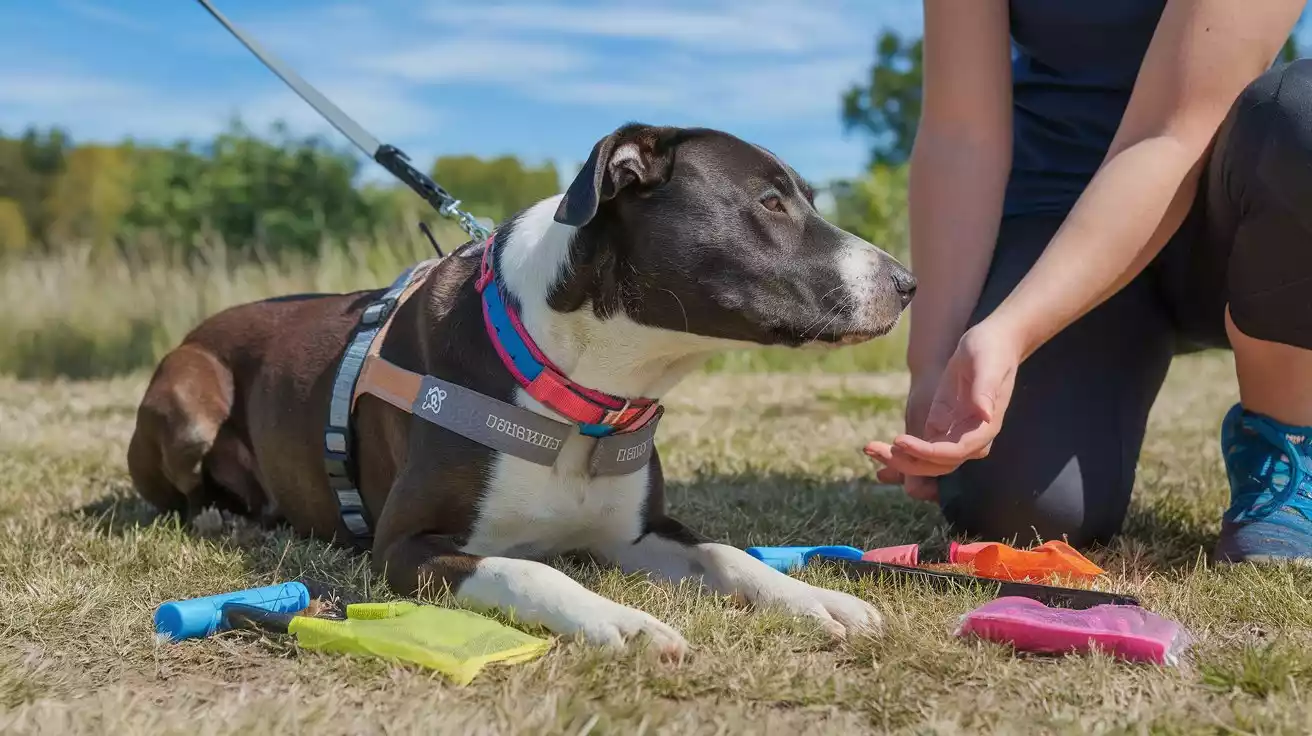
When using correction collars for dog training, safety is key. Puppies need constant supervision to prevent accidents and injuries. This is because they can get into trouble when left alone25.
Creating a safe and comfy space for training is vital. Make sure the area is free from dangers. Also, puppies need a secure spot if you’re away for more than 2-3 hours25.
Supervising puppies on leashes can help prevent bad behaviors. This includes chewing on things they shouldn’t and getting into trash25.
Training aids can pose risks if not used right. Harsh words can scare puppies, leading to anxiety and aggression25. But, using treats, praise, and toys can train dogs safely26.
Here are some safety tips for using training tools:
- Always follow the manufacturer’s instructions for correction collars for dog training
- Provide a secure and comfortable environment for training
- Supervise puppies at all times when not confined
- Avoid harsh reprimands and opt for positive reinforcement techniques instead
By keeping these safety tips in mind, you can train your dog safely and effectively. Always put your dog’s comfort and safety first when using correction collars and other training aids26.
Transform Your Disobedient Dog into an Obedient Companion
Is your dog ignoring commands and leaving you frustrated? You’re not alone, but there’s a proven solution!
With Adrienne Farricelli’s Brain Training for Dogs, get the tools you need to eliminate bad behavior and create the well-behaved, loving companion you’ve always wanted.
Why It Works:
✅ Solve disobedience at its root.
✅ Strengthen your bond with fun, effective techniques.
✅ Access expert guidance anytime with step-by-step videos.
Act Now!
Start transforming your dog’s behavior today, risk-free, with a 60-day guarantee.
👉 Click Here to Get Started Now!
Don’t wait—give your dog the training they deserve!
Conclusion: Building a Strong Bond Through Proper Training Tools
Creating a strong bond with your dog is the main goal in training27. The right tools and methods can change your dog’s behavior and improve your bond. DIY training works for simple commands, but for tough issues, professional help is best28. Training consistently and using positive methods leads to better results28.
Training your puppy early, from 7 weeks old, is key for lasting good habits29. Positive reinforcement, consistent commands, and socialization help your puppy grow into a well-behaved dog29. You can train your dog yourself or with a pro. The most important thing is to find what works best for you and your dog.
Investing in the right training tools and following this article’s advice can create a strong bond with your dog. With patience, consistency, and the right tools, even the most disobedient dog can become loyal and well-behaved.
FAQ
What are the common causes of dog disobedience?
Dogs may disobey due to lack of training, inconsistent reinforcement, or past traumas.
What are the signs of a stubborn dog?
Stubborn dogs often refuse to follow commands, ignore instructions, and may show aggression.
How can past training methods impact a dog’s behavior?
Past training methods can greatly affect a dog’s behavior. It’s key to address these issues to improve obedience.
What are the essential tools for training a disobedient dog?
Key tools include training collars, leashes, and positive reinforcement items. They help in clear communication and reinforcing good behavior.
How do I choose the right training collar for my dog?
The right collar depends on the dog’s size, breed, and behavior. It’s important to fit and adjust it properly.
How can positive reinforcement tools help train a disobedient dog?
Tools like clickers, treats, and praise reward good behavior. They encourage learning without punishment.
What are the benefits of using training leashes?
Leashes help in clear communication and setting boundaries. They improve obedience and strengthen the bond with the owner.
How does clicker training work, and what equipment is needed?
Clicker training uses a clicker, targets, and rewards to reinforce good behavior. It’s based on positive reinforcement.
What should I consider when choosing training treats?
Choose healthy, tasty, and easy-to-consume treats. Proper storage and timing of rewards are also important.
What are modern electronic training aids, and how can they help train a disobedient dog?
Modern aids like e-collars reinforce good behavior and discourage bad. They help in clear communication and setting boundaries.
What are interactive training toys and tools, and how can they benefit my dog?
Toys and equipment provide mental stimulation and focus training. They help in cognitive development and strengthen the bond with the owner.
What should I consider when creating a training tool kit for my dog?
Include essential items like collars, leashes, and positive reinforcement tools. Choose budget-friendly options based on your needs and the dog’s requirements.
What safety considerations should I keep in mind when using training tools?
Safety is crucial when using training tools. Proper use and maintenance are key to ensure the dog’s safety and comfort. Follow the manufacturer’s instructions and take precautions to avoid accidents.
Source Links
- https://www.dogster.com/dog-training/how-to-train-a-stubborn-dog – How to Train a Stubborn Dog Who Won’t Listen: 10 Vet-Approved Tips – Dogster
- https://theonlinedogtrainer.com/how-to-get-dogs-to-listen-silence-calm-energy/ – Dogs Not Listening? Here’s How to Get Dogs To Listen More
- https://petspy.com/blogs/dog-training/multi-dogs-training?srsltid=AfmBOoqoG08dITwW5qriPLmkhtWx0S84N097qoidBi96YblB-2Ft6PD5 – Mastering Multiple Dog Training: Tools and Techniques
- https://leerburg.com/markers.htm?srsltid=AfmBOoqDmsXqkE00Xiqjd54h6gqxagOWkOWM4VcpndkwN2XaoFOT7hIU – The Power of Training Dogs with Markers
- https://www.nehumanesociety.org/for-pet-owners/behavior-help/unruly-dogs.pdf – PDF
- https://www.kingsdale.com/the-different-types-of-dog-training-collars – The Different Types Of Dog Training Collars – A Ultimate Guide To Which One Is Best For Your Dog | Kingsdale Animal Hospital
- https://www.itraink9.ca/dog-training-tips/choosing-the-best-dog-training-collar-for-lasting-results – Choosing the Best Dog Training Collar for Lasting Results | iTK9
- https://robinmacfarlane.com/dog-training-with-positive-reinforcement/ – Dog Training with Positive Reinforcement Is All the Rage?
- https://www.diamondsintheruff.com/training-tools – Training Tools
- https://leerburg.com/markers.htm?srsltid=AfmBOoqrvLPt01_k9oM9eJqRYJVwaIN7s4DlgCS1kdhOkzRKOobRc7Xq – The Power of Training Dogs with Markers
- https://www.thehonestkitchen.com/blogs/pet-tips-training/dog-training-using-the-leash-for-more-than-going-for-a-walk – Dog Training: Using the Leash for More Than a Walk
- https://robinmacfarlane.com/effective-dog-training-methods/ – A Question of Effective Dog Training Methods?
- https://gearjunkie.com/outdoor/hunt-fish/clicker-training-your-dog – Clicker Training 101: It Really Worked for My Puppy
- https://leerburg.com/markers.htm?srsltid=AfmBOoooOQ1yBeuMkLZ4hWzmOT8EM0SQvspQ0h3lA8OxCzN5ukQcYTMN – The Power of Training Dogs with Markers
- https://leerburg.com/markers.htm?srsltid=AfmBOork2-xw6DGY3L5FEt_6jYVjZRXcAVJEvX7ax02tgREtQoV6N_YK – The Power of Training Dogs with Markers
- http://www.rufftranslation.com/blog/category/Manners Training – Manners Training — Ruff Translation Dog Training: Articles
- https://www.huggiesgrooming.com/pet-gadgets – 6 Best Pet Gadgets to Train Your Dog Easily.
- https://www.linkedin.com/pulse/breaking-stubborn-streak-innovative-dog-training-tools-samah-fouad-kq7ve – Breaking the Stubborn Streak: Innovative Dog Training Tools
- https://www.electric-collars.com/Tema/magazine/electronic-training-collar-how-to-choose – Electronic training collar – how to choose?
- https://www.fitbark.com/blog/best-interactive-dog-toys – Best Interactive Dog Toys | FitBark
- https://zachspetshop.com.au/blogs/guides-advice/what-are-enrichment-toys-for-dogs?srsltid=AfmBOop-pwxLDCv7wEOV9yxDodkhKi7Tvrc3XZIe0cA4LFy7_mtklt6I – What are Enrichment Toys for Dogs? A Guide for Owners – Zach’s Pet Shop
- https://farfetchers.com/fetch-made-fun-top-interactive-fetch-toys-for-dogs-reviewed – Fetch Made Fun: Top Interactive Fetch Toys for Dogs Reviewed
- https://theonlinedogtrainer.com/how-to-improve-dog-obedience/ – Stop Disciplining and Start Connecting: How to Improve Dog Obedience
- https://leerburg.com/markers.htm?srsltid=AfmBOorxdhBx45NxCCo3LMo2QzCPp7gy3b3A-tqUv-hFNNt7RlVBqAld – The Power of Training Dogs with Markers
- https://vcahospitals.com/know-your-pet/puppy-behavior-and-training—dealing-with-undesirable-behavior – Puppy Behavior and Training – Dealing with Undesirable Behavior | VCA | VCA Animal Hospitals
- https://samthedogtrainer.com/articles/corrections-and-dog-training-tips/ – Corrections And Dog Training Tips
- https://pmc.ncbi.nlm.nih.gov/articles/PMC7743949/ – Does training method matter? Evidence for the negative impact of aversive-based methods on companion dog welfare
- https://amarillodogtrainers.com/can-i-train-my-dog-myself/ – DIY & Pro Dog Trainer Pros & Cons: Can I Train My Dog Myself
- https://vocal.media/petlife/how-to-train-your-dog-n7gk60va7 – How TO Train Your Dog



